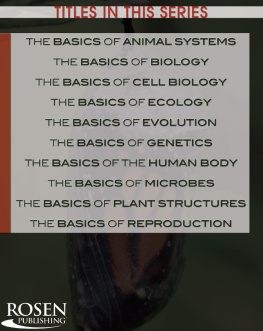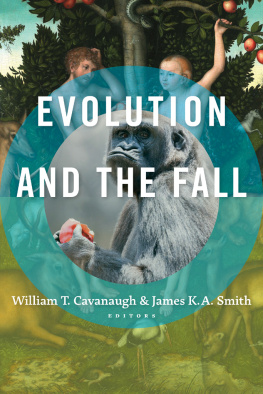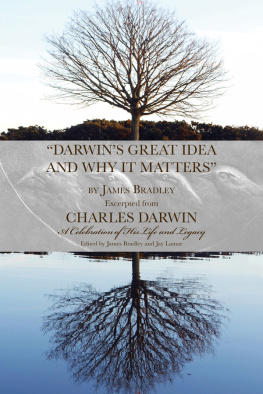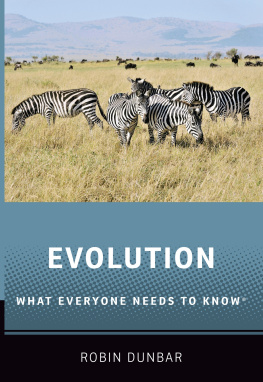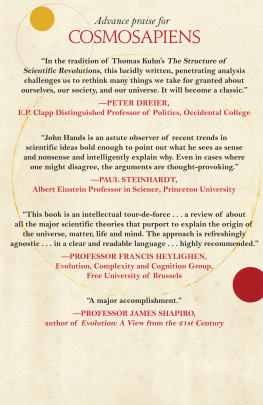Praise for Evolution: A View from the 21st Century
A novel description of evolution based on modern genetic analysis is presented in detail. Shapiro has written a stimulating, innovative manuscript that surely Darwin would have liked.
Sidney Altman, Yale University; Nobel Laureate in Chemistry, 1989
Based on a long and highly competent personal experience in science and his novel insights into biological functions, the author has reached views of biological evolution that can reveal to a wide, interested readership how the living world co-evolves with the environment through its intrinsic powers.
Werner Arber, Professor Emeritus, University of Basel, Switzerland; Nobel Laureate in Physiology/Medicine, 1978
Professor Shapiros offering is the best book on basic modern biology I have ever seen. As far as I can tell, the book is a game changer.
Carl Woese, University of Illinois; discoverer of Archaea, the third realm of life; National Medal of Science 2000
This moving, clearly written, if complex, description of explains evolutionary processes that preceded people by at least 3,000 million years. Shapiros detailed account of ubiquitous genetic dynamism, DNA machination, repair, and recombination in real life, bacterial to mammalian, destroys myths. Genes, whatever they are, are not eternal.... Shapiros careful, authoritative narrative...is entirely scientific and should interest all of us who care about the evolution of genetic systems.
Lynn Margulis, University of Massachusetts, Amherst; National Academy of Sciences, National Medal of Science 1999
From revisiting the Central Dogma, to outlining a systems biological approach to evolution, this book is a magnificent analysis of the key questions of the origin of variation and, therefore, of evolutionary change. Starting from his early encounter with the work and ideas of Barbara McClintock, through to his work on systems engineering as the key to understanding organisms, Jim Shapiro has new insights on all the central issues of evolutionary theory. The genome becomes a read-write storage system rather than the sole determinant of heredity. After reading this book, you will find it imperative to see biology as the 21st century is coming to see it. The ambitious title of the book is fully justified.
This book gives solid biological evidence on the origin of variation and evolutionary change. That evidence will surprise those who still think that variation is random. Cells and organisms sense their environment and transmit that information to their genomes. Brilliant.
Denis Noble, CBE FRS, Balliol College, Oxford; author of The Music of Life
Evolution, or constant change in nature, is the deepest of human ideas. It is the core of all physical, biological, and social systems and scienceslinking energy, matter, life, and consciousness. The dramatic genomic revolution unfolded new informative horizons of constant combinatorial diversity, change, and emerging innovation from simple to complex in biological evolution. Much of the understanding of genome complex adaptive architecture, dynamic reorganization, expression, and regulationas well as the origin of life, cells, and biochemical networksis a future challenge. This book highlights the exciting challenges to explore future nonconventional and nondogmatic vistas of evolutionary biology. The explorative mysteries include roles in evolution of nonrandom adaptive mutations, epigenetics, and repetitive DNA function and regulation. All contribute to dynamic systems biology and engineering between the evolving genome, cell, and environmental stresses and changes affecting the dynamic genome read-write memory system underlying lifes evolution.
Eviatar Nevo, University of Haifa, U.S. National Academy of Sciences; explorer of Evolution Canyon
Evolution
A View from the 21st Century
James A. Shapiro
Vice President, Publisher: Tim Moore
Associate Publisher and Director of Marketing: Amy Neidlinger
Acquisitions Editor: Kirk Jensen
Editorial Assistant: Pamela Boland
Development Editor: Russ Hall
Senior Marketing Manager: Julie Phifer
Assistant Marketing Manager: Megan Colvin
Cover Designer: Chuti Prasertsith
Managing Editor: Kristy Hart
Project Editor: Anne Goebel
Copy Editor: Gayle Johnson
Proofreader: Linda Seifert
Indexer: Erika Millen
Senior Compositor: Gloria Schurick
Manufacturing Buyer: Dan Uhrig
2011 by James A. Shapiro
Publishing as FT Press Science
Upper Saddle River, New Jersey 07458
FT Press Science offers excellent discounts on this book when ordered in quantity for bulk purchases or special sales. For more information, please contact U.S. Corporate and Government Sales, 1-800-382-3419, .
Company and product names mentioned herein are the trademarks or registered trademarks of their respective owners.
All rights reserved. No part of this book may be reproduced, in any form or by any means, without permission in writing from the publisher.
Printed in the United States of America
First Printing June 2011
ISBN-10: 0-13-278093-3
ISBN-13: 978-0-13-278093-3
Pearson Education LTD.
Pearson Education Australia PTY, Limited
Pearson Education Singapore, Pte. Ltd.
Pearson Education Asia, Ltd.
Pearson Education Canada, Ltd.
Pearson Educacin de Mexico, S.A. de C.V.
Pearson EducationJapan
Pearson Education Malaysia, Pte. Ltd.
Library of Congress Cataloging-in-Publication Data:
Shapiro, James Alan, 1943
Evolution : a view from the 21st century / James A. Shapiro.
p. cm.
ISBN 978-0-13-278093-3 (hardback : alk. paper)
1. Evolution (Biology) 2. Genomics. 3. Molecular genetics. 4. Evolutionary genetics. I.
Title.
QH447.S53 2012
576.8dc22
2011008338
This book is dedicated to Felix and Gus and all future grandchildren.
May their generation share natures deep wisdom in adapting life to its home on Earth.
Acknowledgments
My deepest debt of gratitude belongs to Barbara McClintock for sharing her friendship and wise scientific insights with me over the last dozen-plus years of her life. She opened my eyes to a freer way of thinking about science in general and evolution in particular. Next comes Bill Hayes, my doctoral supervisor, who taught me the virtues of experimental simplicity, close observation, and logical thinking without preconceptions. He was an outstanding example of humane mentoring in an otherwise highly competitive field of scholarship.
This book had its genesis in two critical events separated by 15 years. In 1993, I was lucky enough to win the Darwin Prize Visiting Professorship from the University of Edinburgh. The accompanying lectures induced me to begin thinking in a comprehensive way about the role of natural genetic engineering in the evolutionary process. I owe the invitation chiefly to two couples, my longtime friends Willy and Millie Donachie and my newer friends Ken and Noreen Murray. The second event came in 2008 when a German colleague, Joachim Bauer, invited me to collaborate on an English version of his book, Das Kooperative Gen. Although that collaboration did not prove feasible, Joachims invitation stimulated me to become serious about completing a book on new ways of thinking about evolution. The 15-year wait was well worth it. An enormous amount of useful molecular genetic and genomic data became available in the interval. These data documented and reinforced views I had developed in my conversations with McClintock and others.
Among the other colleagues who were not direct collaborators but who helped form my views about conceptual developments in biology and details of genome changes, I have to single out Asad Ahmed, Guenther Albrecht-Buehler, Michael Ashburner, Dennis Bray, Sydney Brenner, Gerard Buttin, Allan Campbell, Nancy Craig, Naomi Datta, Harvey Eisen, Hannah Engelberg-Kulka, Shelly Esposito, Michel Faelen, Alex Frisch, Misha Golubovsky, Dan Gottschling, Jim Haber, Fred Heffron, Maurice Hofnung, John Holland, Lynn Margulis, Alfonso Martinez-Arias, Max Mergeay, Matt Meselson, Kiyoshi Mizuuchi, Jacques Monod, Dennis Noble, Phoebe Rice, Ethan Signer, Hewson Swift, Ed Trifonov, Adam Wilkins, and members of the 1979 Nicholas Cozzarelli lab at the University of Chicago, who rigorously but gently critiqued early versions of my molecular model for phage Mu transposition. I have to beg the indulgence of many other colleagues whose interactions and discoveries helped shape my views and hope they will forgive me for not mentioning their names; doing so would make these acknowledgments look like the speaker list of a large international conference.


